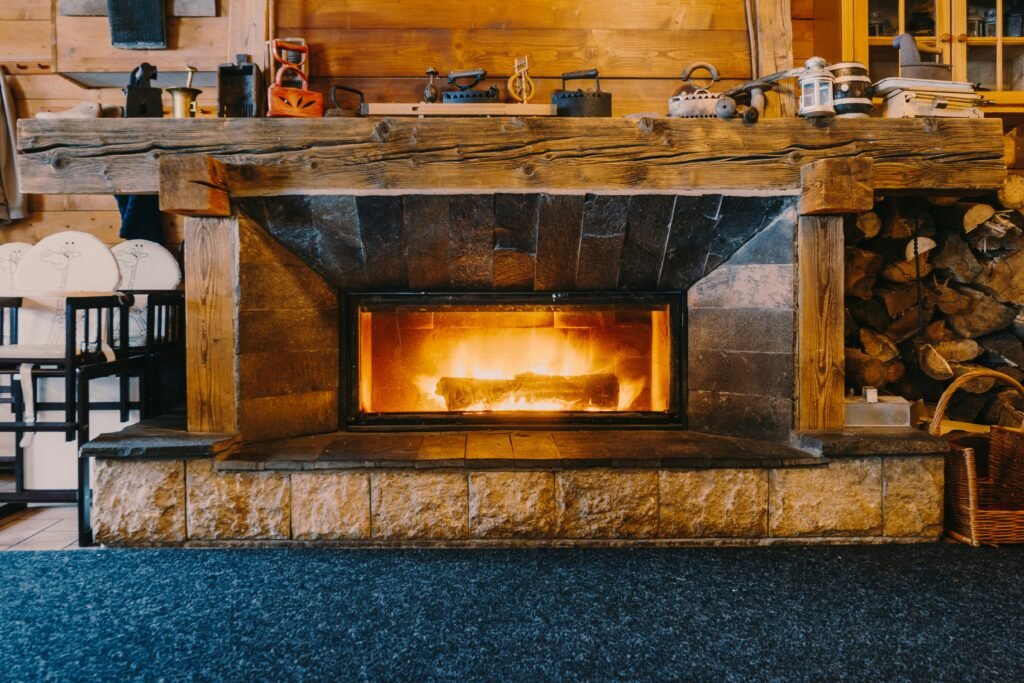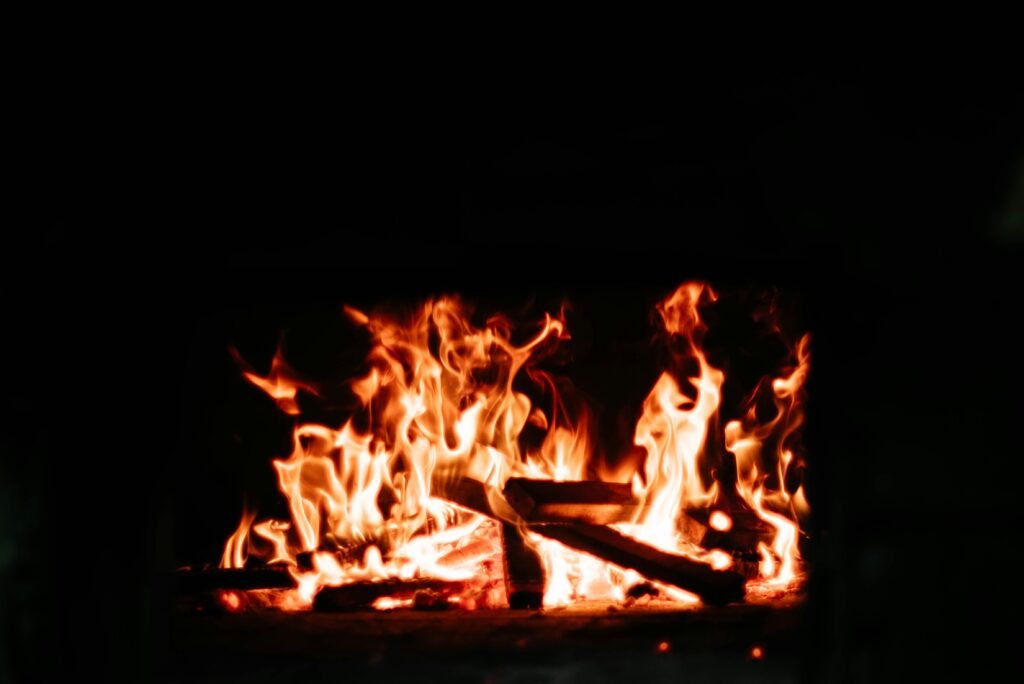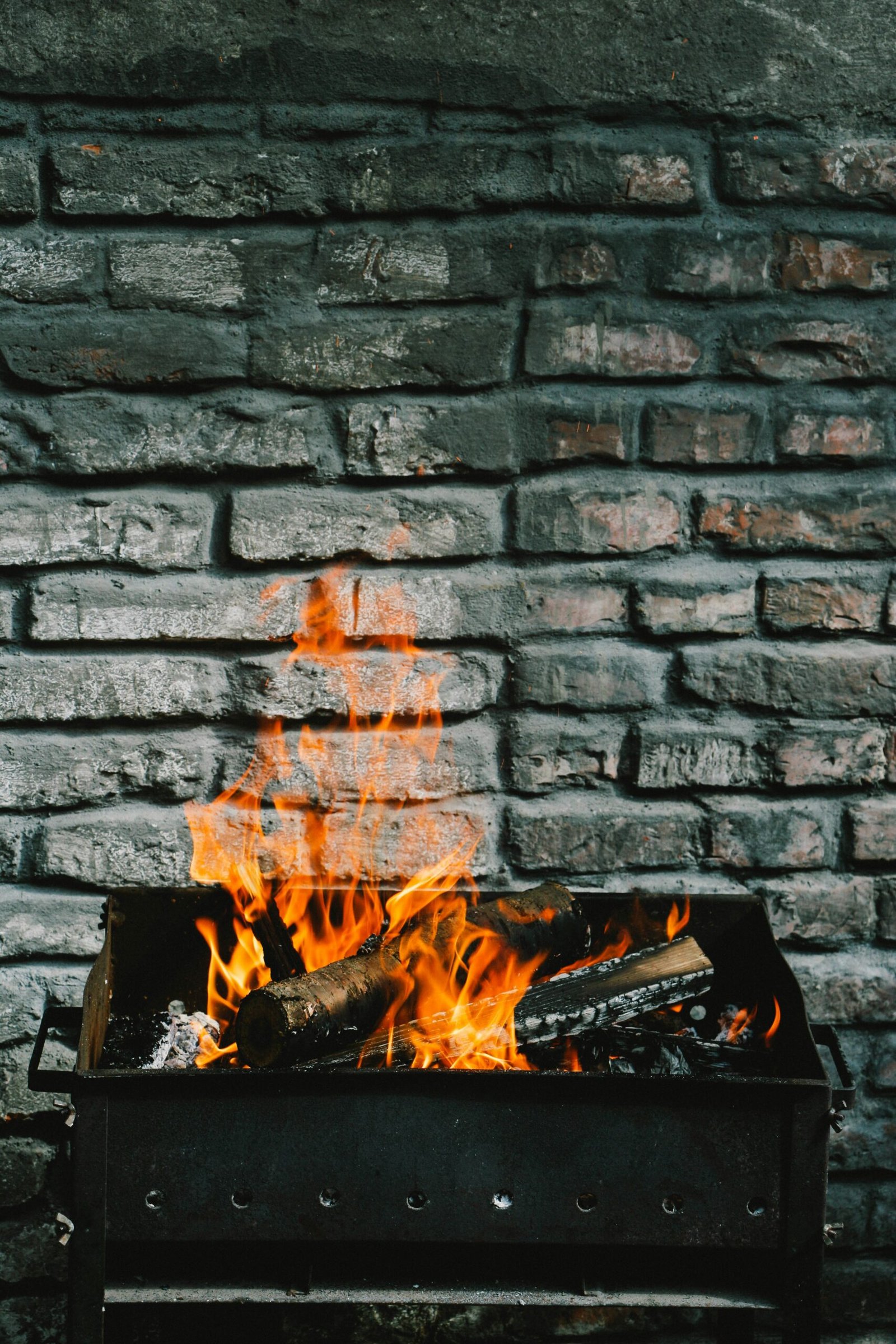Fireplaces are not just a cozy addition to your home; they can also pose potential safety hazards if not properly maintained. That’s why structured fireplace inspections are essential to ensure that everything is in working order and that your home and family are protected. In this article, we’ll explore the importance of these annual checkups and why they should be a priority for every fireplace owner. From identifying potential fire hazards to detecting carbon monoxide leaks, structured fireplace inspections play a crucial role in maintaining a safe and enjoyable atmosphere in your home. So let’s dive in and discover why taking the time for these inspections is well worth it in the long run.

This image is property of images.unsplash.com.
What is a structured fireplace inspection?
A structured fireplace inspection is a thorough and comprehensive assessment of your fireplace system to ensure its safety, efficiency, and overall performance. This inspection involves examining various components of the fireplace, chimney, and ventilation system to identify any potential issues or hazards. The primary purpose of a structured fireplace inspection is to mitigate any safety risks and prevent fire hazards while also improving the fireplace’s performance and efficiency.
The importance of structured fireplace inspections
Structured fireplace inspections are crucial for several reasons. First and foremost, they play a vital role in ensuring the safety of your home and family. By identifying and addressing potential structural issues, clearing blockages or obstructions, and verifying adequate clearance from combustible materials, you can significantly reduce the risk of fire accidents and carbon monoxide poisoning.
Moreover, structured fireplace inspections help prevent fire hazards by clearing creosote buildup, which is a highly flammable substance that accumulates over time in the chimney. By regularly removing this hazardous material, you minimize the risk of chimney fires that can cause extensive damage to your home. Additionally, these inspections assess the condition of the chimney cap and detect signs of water intrusion, preventing further damage to the fireplace system.
Early detection of issues is another critical aspect of structured fireplace inspections. By identifying cracks, damage, loose or deteriorating bricks, and issues with the chimney crown or flue liner, you can address these problems promptly, preventing further deterioration that may require costly repairs or replacements down the line. Additionally, structured inspections also focus on optimizing the fireplace’s performance and efficiency, ensuring proper airflow, combustion, and draft while identifying areas for energy conservation.
Ensuring safety
During a structured fireplace inspection, safety is the foremost concern. The qualified inspector will thoroughly examine the fireplace system, looking for any potential structural issues that could compromise its safety. This includes checking for cracks or damage in the firebox, chimney, and flue liner, as well as inspecting for loose or deteriorating bricks. By identifying these issues early on, you can take the necessary steps to repair or reinforce these components, ensuring your fireplace is safe to use.
Another critical aspect of safety in a structured fireplace inspection is checking for proper ventilation. The inspector will assess the chimney cap, which helps prevent debris, animals, and rainwater from entering the chimney and causing blockages or obstructions. A damaged or clogged chimney cap can hinder proper ventilation, leading to poor combustion, excess smoke, or even carbon monoxide buildup. Therefore, ensuring the chimney cap is in good condition is essential for maintaining a safe and efficient fireplace system.
Inspecting chimney liners is also a crucial part of ensuring safety. The liner protects the walls of the chimney from heat and corrosion, and a damaged or deteriorating liner can pose significant risks. The inspector will assess the condition of the chimney liner, checking for any signs of damage or deterioration. If any issues are found, appropriate steps can be taken to repair or replace the liner, ensuring the safety and integrity of the fireplace system.
In addition to these structural components, a structured fireplace inspection includes assessing the condition of various accessories and components. The inspector will examine fireplace doors, dampers, and screens, ensuring they are functioning correctly and not presenting any safety hazards. Furthermore, they will test smoke and carbon monoxide detectors to verify their proper operation. This comprehensive inspection of all the fireplace accessories and components helps ensure maximum safety and peace of mind for the homeowners.
Preventing fire hazards
Structured fireplace inspections play a vital role in preventing fire hazards. One of the main fire hazards associated with fireplaces is the buildup of creosote. Creosote is a highly flammable substance that accumulates on the walls of the chimney due to incomplete combustion. Over time, this buildup can become a significant fire hazard, as it can ignite and cause chimney fires that can spread to the rest of the home. During a structured fireplace inspection, the inspector will thoroughly clean and clear any creosote buildup, minimizing the risk of chimney fires and ensuring the safety of your home.
In addition to clearing creosote buildup, structured fireplace inspections also focus on checking for blockages or obstructions in the chimney. Debris, animal nests, or even fallen branches can block the chimney, preventing proper ventilation and increasing the risk of fire accidents. By removing these obstructions during the inspection, you can ensure that the fireplace operates efficiently and safely.
Another crucial element of preventing fire hazards is assessing the condition of the chimney cap. The chimney cap acts as a barrier against rainwater, debris, and animals, preventing them from entering the chimney and causing blockages. If the chimney cap is damaged or missing, these external elements can easily enter the chimney, posing a fire hazard. During a structured fireplace inspection, the inspector will carefully examine the chimney cap and recommend repairs or replacements if necessary, ensuring the safety and functionality of the chimney.
Additionally, structured fireplace inspections verify that there is adequate clearance from combustible materials. It is essential to maintain a safe distance between the fireplace and any surrounding materials that can easily catch fire, such as furniture, curtains, or firewood. During the inspection, the inspector will ensure that these materials are not in close proximity to the fireplace, reducing the risk of fire accidents.

This image is property of images.unsplash.com.
Early detection of issues
Structured fireplace inspections are an essential tool for early detection of issues that can potentially turn into major problems if left unattended. By identifying cracks or damage in the firebox, chimney, and flue liner, the inspector can address these issues promptly, preventing further deterioration that may require extensive repairs or replacements.
Detecting signs of water intrusion is another crucial aspect of structured fireplace inspections. Water can cause significant damage to the fireplace system, including rust, corrosion, and deterioration of the masonry. The inspector will carefully examine the chimney for any signs of water damage, such as stains or efflorescence. By detecting these signs early on, you can take the necessary steps to address the water intrusion and prevent further damage to the fireplace system.
Checking for loose or deteriorating bricks is also an important part of a structured fireplace inspection. Over time, bricks can become loose, creating a potential safety hazard. By identifying and repairing loose bricks promptly, you can ensure the structural integrity of the fireplace and prevent any accidents or further damage.
Furthermore, the inspector will thoroughly assess the condition of the chimney crown. The chimney crown is located at the top of the chimney, and its primary function is to protect the chimney from water intrusion. If the chimney crown is cracked or damaged, water can easily seep into the chimney, causing significant damage to the masonry and potentially compromising the entire fireplace system. Detecting and repairing any issues with the chimney crown is crucial in maintaining the longevity of the fireplace.
Inspecting the flue liner for damage is another important aspect of structured fireplace inspections. The flue liner protects the walls of the chimney from the corrosive byproducts of combustion and helps maintain proper airflow. If the flue liner is damaged or deteriorating, it can lead to decreased performance, inefficient combustion, and potentially hazardous situations. By identifying and rectifying any issues with the flue liner, the structured fireplace inspection ensures the safety and efficiency of the fireplace system.
Improved performance and efficiency
In addition to ensuring safety, structured fireplace inspections also focus on improving the performance and efficiency of the fireplace system. By addressing various aspects of the fireplace and chimney, these inspections help optimize airflow, combustion, and draft.
Ensuring proper airflow is essential for efficient and clean combustion. During a structured fireplace inspection, the inspector will assess the condition of the chimney and ventilation system, checking for any blockages, obstructions, or issues that could impede proper airflow. By clearing any blockages and resolving ventilation issues, the inspector helps the fireplace operate at its best, maximizing efficiency and minimizing the production of smoke and harmful byproducts.
Optimizing combustion and draft is another critical aspect of structured fireplace inspections. The inspector will assess various factors that influence combustion, such as the condition of the firebox, flue liner, fireplace doors, and dampers. By ensuring that these components are functioning correctly, the inspector helps achieve optimal combustion, resulting in better heat output and reduced emissions.
Cleaning or replacing fireplace accessories is also important for improved performance and efficiency. Over time, fireplace doors, screens, and dampers can accumulate dirt, soot, and debris, hindering their proper function. During the inspection, the inspector will clean or recommend the replacement of these accessories, ensuring smooth operation and improved performance.
Identifying areas for energy conservation is another benefit of structured fireplace inspections. The inspector will assess the fireplace’s overall energy efficiency and provide recommendations to maximize energy savings. This may include suggestions for upgrading to more efficient fireplace inserts, adding insulation, or making adjustments to the damper settings. These energy-saving measures not only reduce your environmental footprint but also result in lower heating costs.
Furthermore, structured fireplace inspections provide an opportunity for recommendations regarding upgrades or repairs. The inspector, based on their expertise and knowledge, may suggest improvements to your fireplace system, such as installing a new chimney cap or flue liner, upgrading to a more efficient fireplace insert, or repairing any structural issues. By implementing these recommendations, you can enhance the performance, efficiency, and longevity of your fireplace system.

This image is property of images.unsplash.com.
Frequency of structured fireplace inspections
It is crucial to have structured fireplace inspections performed periodically to ensure the safety and functionality of your fireplace system. The frequency of these inspections depends on several factors, including usage, local safety codes, and any significant events that may affect the fireplace system.
Annual inspections are recommended for all fireplace systems, even those that are used infrequently. By having your fireplace inspected annually, you can catch any potential issues or hazards before they escalate into more significant problems. Additionally, annual inspections help maintain the efficiency and performance of your fireplace throughout the year, providing peace of mind and enjoyment during the colder months.
In addition to annual inspections, it is wise to have a structured fireplace inspection after any significant events that may impact the fireplace system. This includes events such as chimney fires, earthquakes, lightning strikes, or even severe storms. These events can cause damage to the fireplace and chimney, and a thorough inspection is necessary to assess the extent of the damage and take appropriate remedial action.
Inspections prior to regular fireplace usage are also essential. Before the start of the winter season or whenever you plan to use your fireplace regularly, it is crucial to have a structured inspection conducted. This ensures that the fireplace and chimney are in optimal condition, ready for safe and efficient usage. By having this pre-usage inspection, you can address any potential issues or hazards that may have arisen during periods of non-use.
Qualified inspectors
Structured fireplace inspections should be performed by qualified professionals who have the necessary certifications, experience, and knowledge in fireplace systems and safety. Choosing a reputable professional for this task is of utmost importance to ensure the accuracy and thoroughness of the inspection.
A qualified inspector should possess certifications from recognized organizations such as the Chimney Safety Institute of America (CSIA) or the National Fireplace Institute (NFI). These certifications validate the inspector’s expertise and knowledge in fireplace safety and ensure that they adhere to industry standards and best practices.
Experience is another crucial aspect to consider when selecting an inspector. A seasoned inspector with several years of experience has likely encountered a wide range of fireplace systems and issues and can provide a comprehensive and accurate assessment of your fireplace system.
Choosing a reputable professional for structured fireplace inspections is essential to ensure that the inspection is conducted in accordance with local safety codes and regulations. Local safety codes vary from region to region, and it is crucial that the inspector is well-versed in these codes to ensure compliance and safety.
Costs and savings
While structured fireplace inspections may incur some costs, neglecting these inspections can potentially lead to significant financial burdens down the line. The cost of a structured fireplace inspection varies depending on various factors, including the size and complexity of the fireplace system and the location.
The potential costs of neglecting structured fireplace inspections can be substantial. If issues or hazards go undetected, they can worsen over time and lead to costly repairs or even the need for complete system replacements. For example, a small crack in the firebox or chimney liner, if left untreated, can expand and compromise the structural integrity of the entire system, necessitating extensive repairs or replacements. By addressing these issues early on through regular inspections, you can save substantial amounts of money in the long run.
Financial savings through early detection is one of the significant advantages of structured fireplace inspections. By identifying and addressing minor issues before they escalate, you can prevent more costly repairs or replacements. For instance, replacing a deteriorating chimney cap is far more cost-effective than having to deal with the consequences of a chimney fire caused by a faulty cap.
Moreover, maintaining a safe and efficient fireplace system can lead to long-term savings on energy costs. An optimized fireplace system operates more efficiently, minimizing heat loss and reducing the need for additional heating sources. By implementing energy-saving measures recommended during structured inspections, homeowners can enjoy lower energy bills and contribute to a more sustainable environment.
By investing in regular structured fireplace inspections, you can avoid costly repairs or replacements and potentially save a significant amount of money in the long run. The small expense of inspections is a worthwhile investment in ensuring the safety, performance, and longevity of your fireplace system.
Conclusion
Structured fireplace inspections are essential for maintaining the safety, performance, and efficiency of your fireplace system. By prioritizing these inspections, you can identify and address potential issues or hazards, prevent fire accidents, detect problems early on, and optimize the performance of your fireplace. Remember, safety should always be the primary concern, and by choosing a reputable professional to conduct these inspections, you can ensure the accuracy and thoroughness of the assessment. So, make sure to schedule your next structured fireplace inspection to preserve the longevity of your fireplace and enjoy warm and cozy fires with peace of mind.




